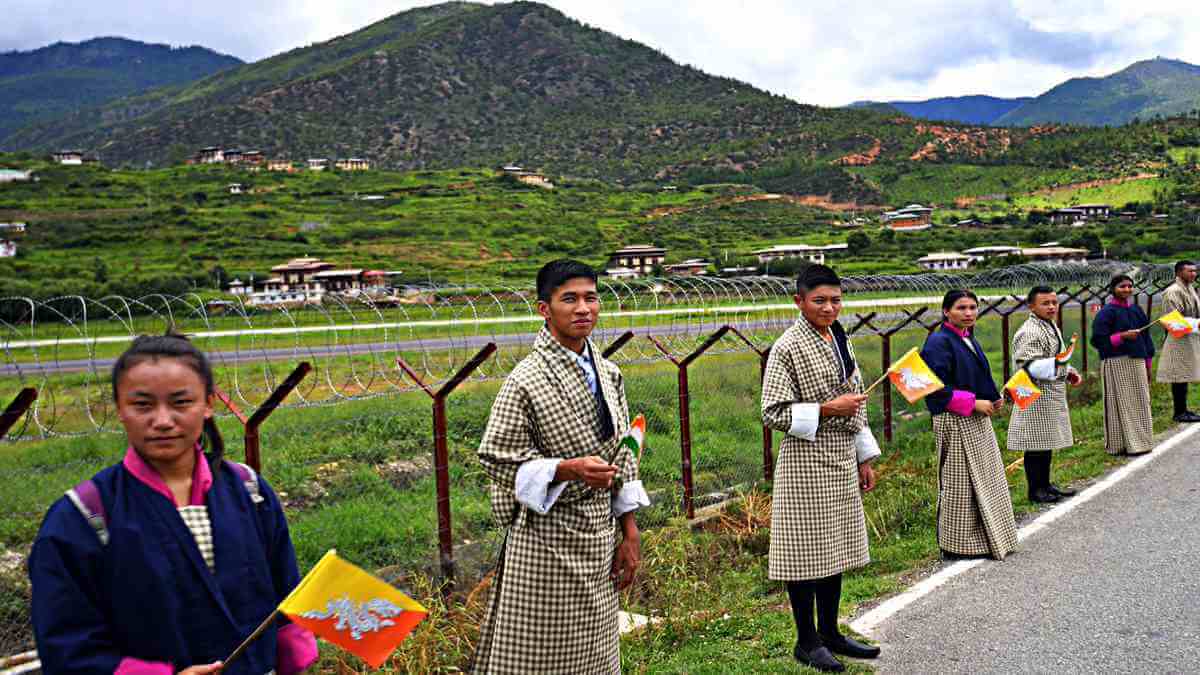On Friday, China and Bhutan signed a Memorandum of Understanding (MoU) to resolve their ongoing border disputes through a “three-step roadmap.” The document was signed during a virtual conference between Bhutanese Foreign Minister Lyonpo Tandi Dorji and Chinese Deputy Foreign Minister Wu Jianghao.
A press release by the Chinese Foreign Ministry stated: “It is expected that the MoU will make a significant contribution to speed up the negotiation on demarcation and promote the process of establishing diplomatic ties between the two countries.”
It added that China would “follow Xi Jinping Thought on diplomacy, follow the neighbourhood diplomacy featuring amity, sincerity, mutual benefit and inclusiveness, and be a good neighbour, friend and partner of Bhutan on the principles of equality and peaceful coexistence.” The Chinese statement also quoted the Bhutanese minister as saying that the two sides would work together to improve bilateral relations and end their boundary disputes.
Bhutanese Foreign Minister Dorji also released a statement celebrating the document. He said the MoU would provide a “fresh impetus” to the border talks. His statement went on to say: “The negotiations which have been conducted in a spirit of understanding and accommodation have been guided by the 1988 Joint Communiqué on the Guiding Principles for the Settlement of the Boundary and the 1998 agreement on the maintenance of peace, tranquillity and status quo in the Bhutan-China Border areas.”
However, no further details of the document have been shared by either side.
Bhutan and China have historically disagreed on the exact positioning of their 470-kilometre border. In fact, in November 2020, satellite images taken by US-based operator Maxar Technologies showed the development of a new village by China along the contested Himalayan border that it shares with India and Bhutan. A few months prior to this, China had stated its opposition to funding a project for the Sakteng Wildlife Sanctuary at the 58th meeting of the UNDP’s Global Environment Facility (GEF) Council, claiming it was “disputed” territory.
The two nations have conducted 24 rounds of boundary talks and 10 “Expert Group” negotiations to end their border conflict. Therefore, the MoU signed last week is seen as a positive step towards concluding these years-long discussions.
Following the signing of the MoU, the Chinese state-owned media outlet Global Times published an article blaming India for the ongoing tiff between China and Bhutan. The article read: “Unlike what it did in the Doklam standoff in 2017, India may have less chances or excuses to make troubles over border areas when there is a significant improvement on boundary talks between China and Bhutan, and it may choose to set blockades for Bhutan and China when the negotiations enter the crucial period, experts warned.”
It also mentioned that the resolution of the issue would not be taken well by India, claiming that the South Asian giant has used unresolved boundary spats between Bhutan and China as an excuse to attack China. In June 2017, China and India were engaged in a two-month-long standoff in Doklam, viewed as the most serious skirmish since the 1962 War.
India, Bhutan’s close ally and China’s regional rival, has previously said it would continue to closely follow border talks between Thimphu and Beijing. Therefore, last week’s developments are surprising, seeing as Bhutan has generally conducted its international negotiations through India. However, it is not clear whether Indian diplomats were involved in these latest discussions with China.
For India, this is extremely relevant because Article 2 of the 2007 treaty that it signed with the landlocked nation makes it responsible for Bhutan’s defence, considering its limited defence capabilities. In this case, the resolution of the issue could result in Bhutan losing its dependence on India in the region.
It could also lead to stronger ties between China and Bhutan, which would undermine India’s efforts to counter China’s growing influence in South Asia. So far, the two sides do not share an official diplomatic relationship and communicate through their missions in New Delhi. Taking this into account, the MoU may indicate a major shift in Bhutan’s foreign policy.
China, Bhutan Sign MoU on Border Dispute, Not Clear if India Was Involved in Talks
Bhutan and China have already conducted 24 rounds of boundary talks and ten expert group-level discussions to bring an end to their border dispute.
October 18, 2021

SOURCE: THE PRINT
